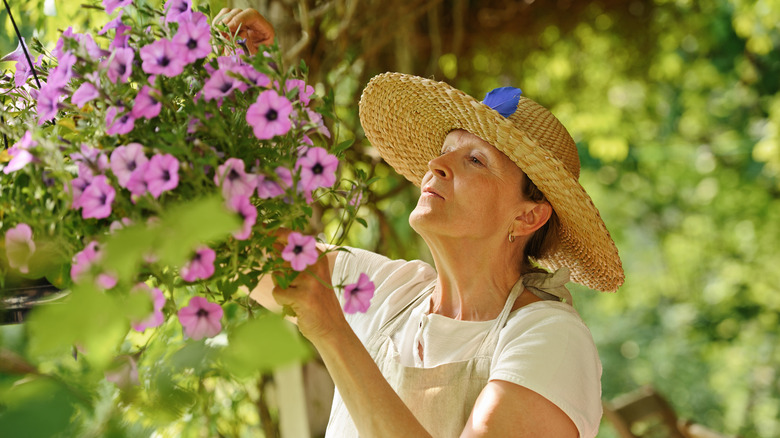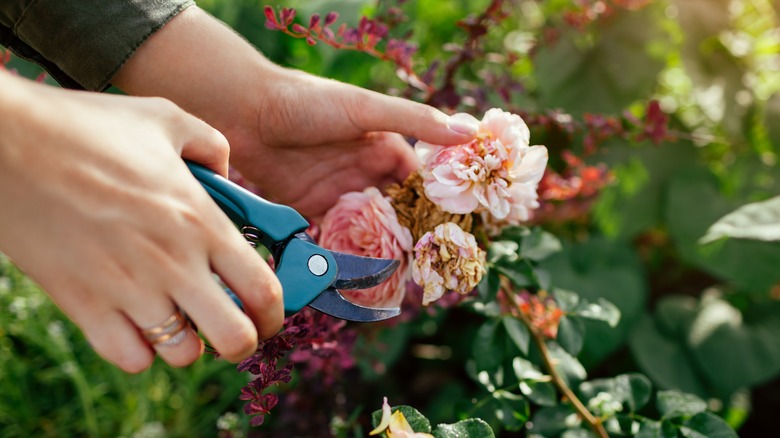If you’re not one of those gardeners who think summer is over when September arrives, then maybe you want to know how to keep your garden looking colorful and fresh as the season shifts into autumn. It’s very simple to keep your garden looking neat and lively as long as you do a few basic tasks consistently. The three most important tasks to keep the late-season garden colorful are trimming, pruning, and deadheading.
While you can do trimming, pruning, and deadheading all season long in your garden, planning to do it in late summer through autumn helps to keep your plants looking neat at the peak of the season. This also helps them to rebloom and renew their growth to give them a few more weeks of beauty and vigor. You can trim, deadhead, and prune your shrubs, perennials, and annuals easily and with no special tools other than some handheld bypass pruners, and maybe a pair of loppers for larger branches.
Start out slowly and don’t trim or prune everything in one area all at once, because in some cases it may take a few days or a couple of weeks for the plant to put out fresh growth. Stagger your efforts over a couple of weeks, so the garden won’t look too bare while the new buds and leaves fill in.
Annuals and perennials benefit from deadheading

Both annuals and perennials benefit from trimming and deadheading, even though their growth cycles are somewhat different. Annuals often produce flowers more vigorously in warm weather, so deadheading them regularly will keep them blooming throughout the season. Deadheading is something most gardeners are familiar with — it simply refers to removing the spent flower heads of a plant once the flowers begin to droop or dry out. You can either pull off the faded flowers, or gently snip the stem, and which one you do may depend on the type of plant.
For example, your portulacas can be cleaned up by simply running your gloved fingers gently along the stem to clear off any brown flower petals. Petunias also respond well to gently tugging loose or trimming the spent flowers. For low-growing lobelia, snipping off the top one or two inches of the stem allows more buds to form so it will rebloom. Snipping off the spent flowers and the top inch or two of stem is also a good method to use for deadheading your dianthus, snapdragons (perennial or annual), coreopsis, aster, alyssum, phlox, and Shasta daisies.
Late summer upkeep in the garden

Pruning larger shrubs and perennials back is also a good practice in the late summer. For instance, a butterfly bush can be pruned twice — first deadhead the spent flower stalks, then cut the plant back to about 6-12 inches. This stops it from growing too large and also promotes healthy new growth. This same method can be applied to kerria japonica, amsonia, and false indigo.
Cutting back large clumping perennials that only bloom once is also a good practice and will keep the foliage looking neat. Once the foliage on spring-blooming perennials (like bleeding hearts, peonies, and irises) starts to fade in late summer, you can cut it back. This also applies to summer blooming day lilies, Asiatic lilies, and Oriental lilies. Some of these may grow a small amount of fresh foliage that will last until winter arrives.
To keep the garden looking generally neat as you do your deadheading and trimming, clean up all the dead and discarded growth immediately, and bag it or put it in your compost or brush pile. Birds and other wildlife like to snack on late-season seeds (such as sunflowers and echinacea seeds) and rosehips, so either leave them attached for a while or place them where they can reach them for a good food source.



